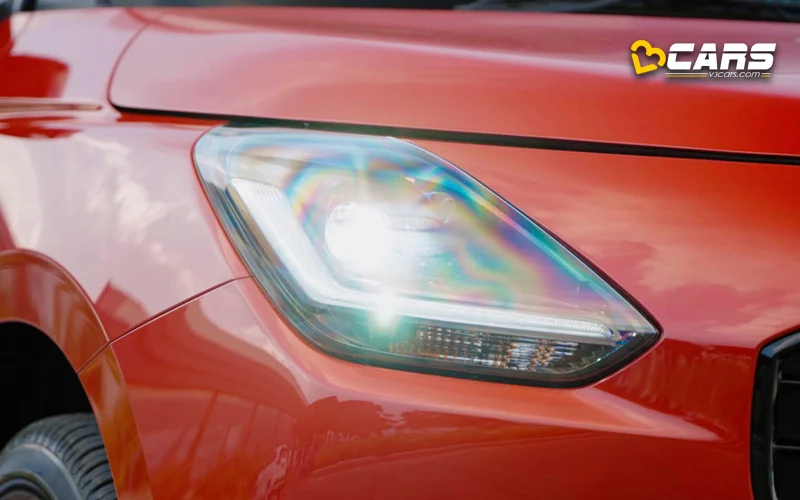What Is An LED Headlamp? Feature Explained
In this Feature Explained article, we’ll shed light on LED headlamps, a now-common yet continuously evolving automotive lighting technology. We’ll explore their functionality, the advantages they offer over traditional headlamps, and the various advanced features often integrated into modern LED headlamps. Understanding LED headlamps will help you appreciate their contribution to safety, style, and overall driving experience.

What Are LED Headlamps?
LED (Light Emitting Diode) headlamps utilise semiconductor light sources to produce illumination. Unlike halogen or xenon headlamps that rely on heated filaments or gas discharge, LEDs generate light directly from the movement of electrons within a semiconductor material.
How Do LED Headlamps Work?
The process is quite different from traditional bulbs:
- Electrical Current: When an electrical current passes through the LED’s semiconductor material, it excites electrons.
- Light Emission: These excited electrons release energy in the form of photons, which we perceive as light.
- Heat Dissipation: LEDs generate heat, although much less than incandescent bulbs. Effective heat sinks are crucial for maintaining optimal performance and longevity.
- Optical Control: Lenses and reflectors are used to shape and direct the light beam for optimal visibility.
What Are The Advantages Of LED Headlamps?
LED headlamps offer the following advantages over conventional halogen headlamps:
- Superior Brightness: LEDs produce a brighter, more focused light compared to halogen bulbs, improving visibility, especially at night and in adverse weather conditions.
- Energy Efficiency: LEDs consume significantly less power than halogen bulbs, reducing the load on the vehicle’s electrical system and potentially improving fuel efficiency (or range in EVs).
- Long Lifespan: LEDs have a much longer lifespan than halogen bulbs, often lasting the entire life of the vehicle, eliminating the need for replacements.
- Instant Illumination: LEDs reach full brightness almost instantaneously, providing immediate illumination when switched on.
- Design Flexibility: LEDs are compact and can be easily shaped, allowing for more creative and stylish headlamp designs.
- Color Temperature: LEDs produce a light closer to natural daylight, reducing eye strain and improving visibility.
What Are The Disadvantages Of LED Headlamps?
LED headlamps have the following drawbacks or disadvantages:
- Higher Initial Cost: LED headlamps are typically more expensive than halogen bulbs, although the long lifespan often offsets this cost over time.
- Heat Management: While more efficient than halogen, LEDs still generate heat. Effective heat sinks are essential for performance and reliability.
- Repair Complexity: Replacing or repairing an LED headlamp unit can sometimes be more complex and expensive than replacing a simple bulb.
Also Read: LED DRLs – Feature Explained
Advanced LED Headlamp Features
Modern LED headlamp systems often incorporate advanced features to further enhance safety and convenience:
- Automatic Headlamp Leveling: Sensors automatically adjust the headlamp beam angle based on vehicle load and road conditions, preventing glare for oncoming drivers.
- Adaptive Front-lighting System (AFS): The headlamps swivel in response to steering input, illuminating corners and curves for improved visibility.
- High Beam Assist (HBA): The system automatically switches between high and low beams based on the presence of other vehicles, maximising visibility without dazzling other drivers.
- Matrix LED Headlamps: These systems use multiple individually controllable LEDs to create a dynamic light pattern. They can selectively dim or turn off specific LEDs to avoid blinding oncoming traffic while maintaining maximum illumination in other areas.
- Laser High Beams: In conjunction with LEDs, laser high beams provide extremely long-range illumination for enhanced visibility at high speeds.
Affordable Cars In India With LED Headlamps
The top Alpha variant of the Maruti Suzuki Ignis is one of the most affordable cars in India that offer LED headlights. Other affordable cars that offer LED headlights include the Maruti Baleno, Maruti Swift, Hyundai i20, Tata Tiago, and the Toyota Glanza, among others.
LED headlamps represent a significant advancement in automotive lighting technology. Their superior brightness, energy efficiency, long lifespan, and design flexibility contribute to improved safety, style, and overall driving experience. The integration of advanced features like adaptive front-lighting and Matrix LED technology further enhances their capabilities, making them a crucial element of modern vehicle design.
Also Read: Projector Headlamps – Feature Explained
Note: Check your Car EMI with our - Car Loan EMI Calculator
You can use our Fuel Cost Calculator to see how much any petrol, diesel or CNG car will cost to run based on the latest fuel price in your city.



0 Comments